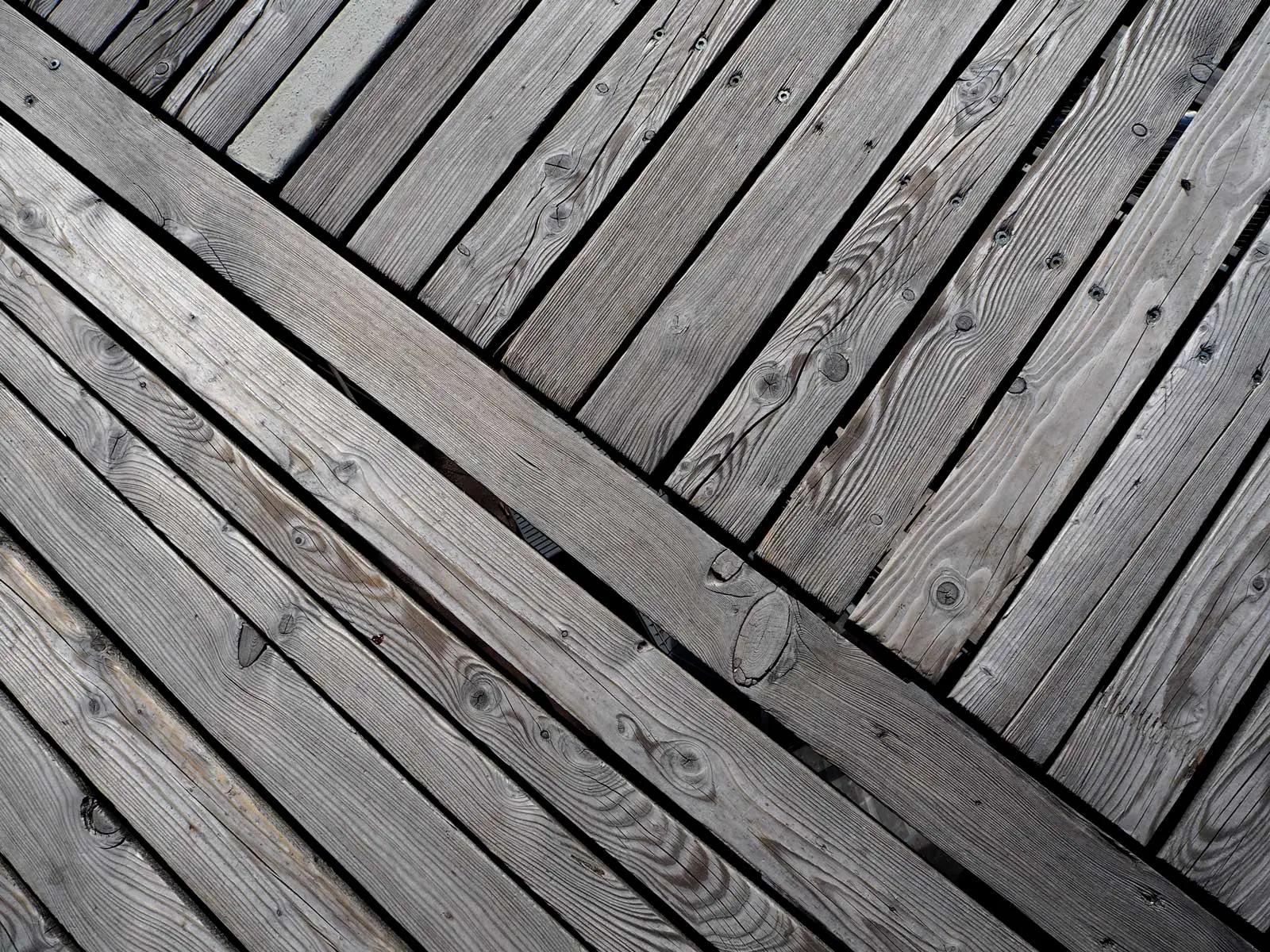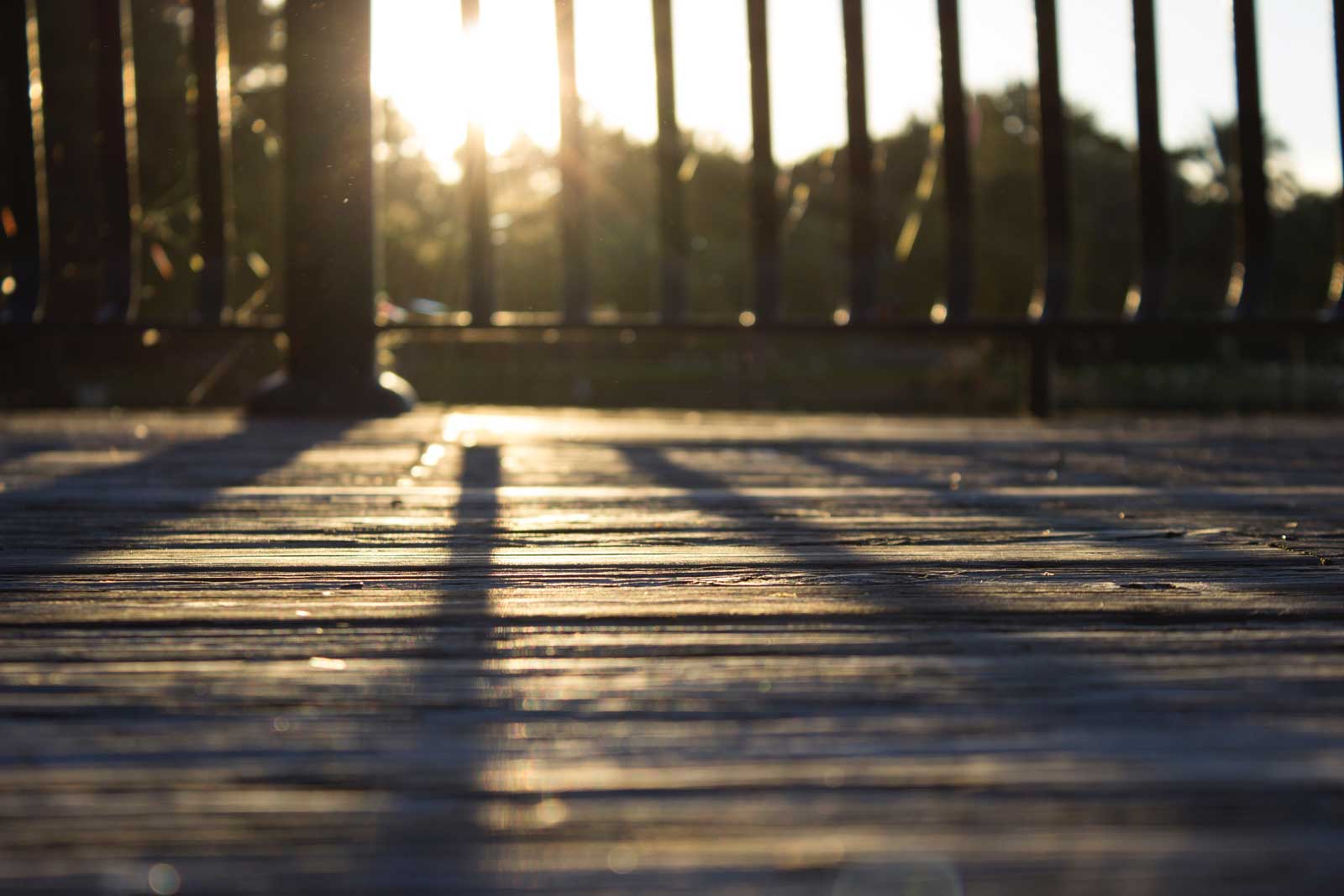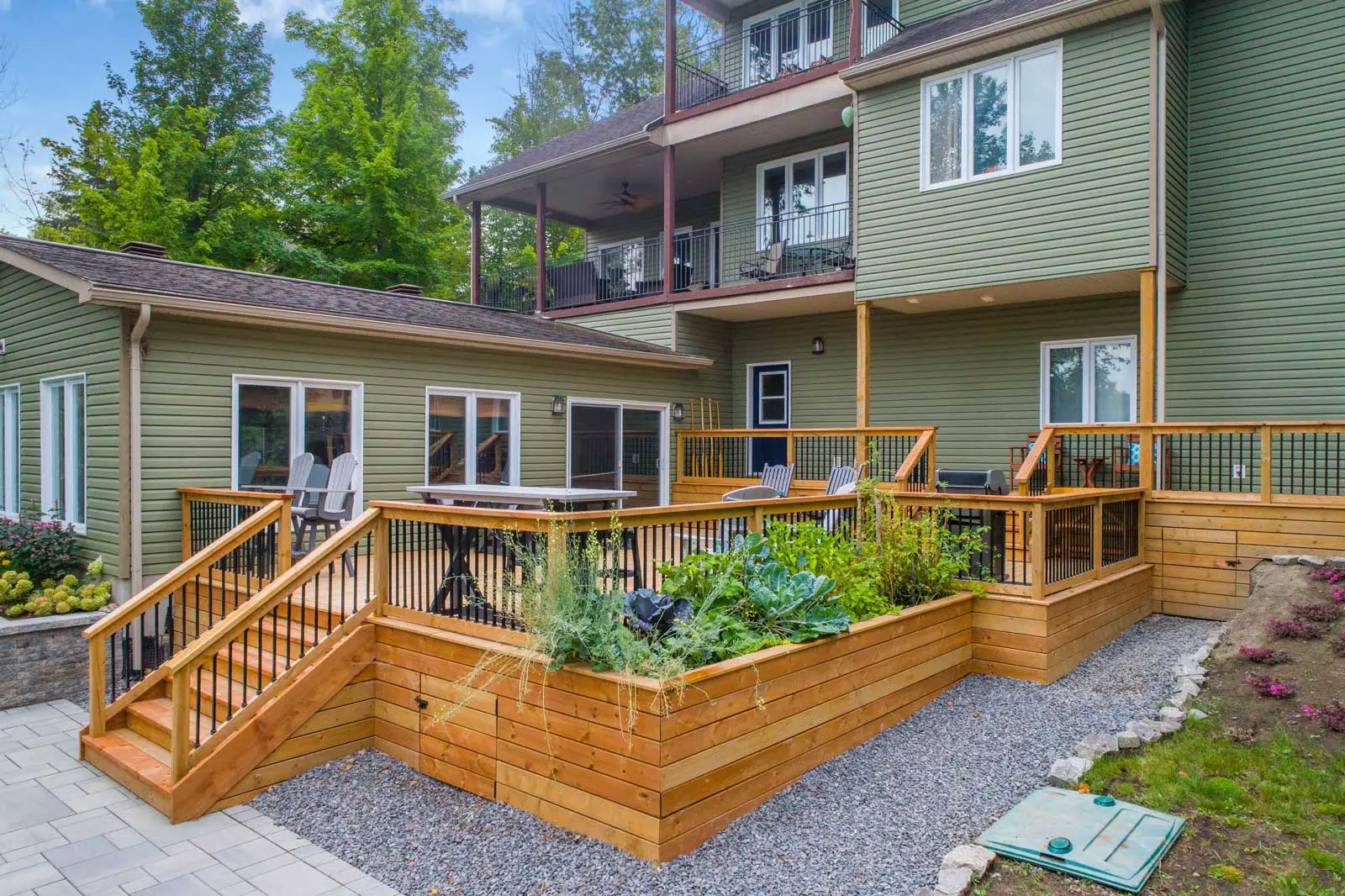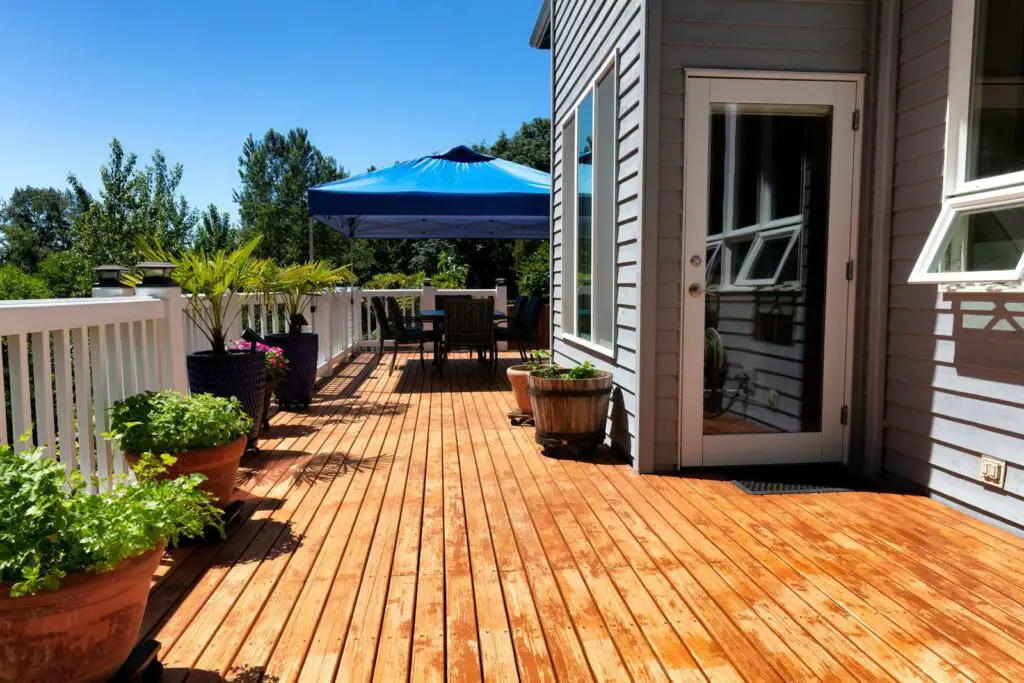Are you tired of your sun-bleached, faded, squeaky deck boards? They not quite as strong as they once were?
What if I told you you don’t have to replace your deck?
Even though the top side has been hammered for years by being exposed to harsh elements like rain and the blistering sun, making it more prone to rapid aging and degradation, did you know that you can you flip the boards over to give your deck a fresh start?
Yes, you can reuse old deck boards by flipping them. By flipping the boards, you can save money, extend their life, and reduce waste. It’s a highly cost-effective and environmentally friendly solution to update your deck. With the right tools and careful preparation, flipping deck boards can be a fantastic DIY project.
But there are a few steps involved – it’s not quite so simple as popping your boards up and turning them over.
What tools do you need?
Do you need a permit?
What do you need to look out for to see if your boards are ok to reuse or not?
What hazards should you be aware of?
It might seem counterintuitive to flip a weathered board, but in this article I’ll discuss the key steps for how flipping deck boards can save you from starting from scratch and reduce the cost of replacing the existing boards with new ones.
By the way – before we get too far along here, if you want to connect with other homeowners and builders and get more great ideas for your home to make your space the best join my free private Facebook group, Remodel Reality here.
 Reasons to Flip Deck Boards
Reasons to Flip Deck Boards
We’ve all seen it – the boards on your deck have just gotten to the point where something needs to be done.
They’re ugly, they’re starting to sag, bow, or warp, the nails, are coming lose, and you’ve got to figure out something to do with them if you want to be able to use your deck in any way.
But you don’t want to fork out a ton of money to replace all that decking, so what do you do?
As a homeowner, you want to save money and reduce waste on home improvement projects. One way to do this is flipping the boards of your deck instead of replacing them with expensive new material. By flipping over old deck boards, you extend the life of your current deck with little to no additional costs.
Not only is flipping your old deck boards good for your wallet, it’s also good for the environment. Instead of adding pressure-treated wood and more waste to a landfills, you’re reusing materials which is always a good thing.
Flipping your deck boards is not without risks though; make sure to inspect each but carefully before turning it over so there are no nails or screws sticking out that could cause injury or damage. Also, prepare the surface properly before installing to make sure the flipped boards are level and secure.
Overall, turning old deck boards can be an easy way to upgrade outdoor space while keeping within budget and helping Mother Nature at the same time. With patience and proper preparation, you can create a beautiful decking finish that stands up for many years with minimal costs incurred in the process!
 Steps to Flip Deck Boards: Inspection
Steps to Flip Deck Boards: Inspection
The first thing you need to do to do a thorough inspection of your decking material (you should be doing this annually anyway!).
You want to see if there are any signs of damage. Start by examining the underside of each board. Look for any signs of rot, mold, insect or other types of damage. If the underside of the board looks good – meaning it’s dry, solid, and free from any visible damage – then it should be a good candidate for flipping.
However, if you notice any signs of rot or decay, don’t worry – there are still ways to save money and reduce waste when you’re repairing or upgrading your deck. When you find boards that are damaged it’s best to replace the board instead of flipping it.
In addition, it may be painfully obvious and the reason you started this project to begin with, but you need to also check for deformed, warped, sagging, spongy boards too. Some of these boards may be able to be salvaged, but some will almost certainly need to be replaced.
When you have cracked or split boards you may be able to trim them down to use in other areas if they’re otherwise undamaged.
Flipping a damaged board could cause even more problems down the line, as it may not provide a stable surface for your deck. Plus, replacing a few boards here and there should be expected – but it will be a lot cheaper than replacing them all!
Preparation For Flipping Your Deck Boards
Prepping your deck before flipping the boards is an essential step that will help ensure a successful and safe project.
Get everything off your deck so that you have plenty of room to work. Once everything is cleared off, it’s time to clean the surface of your deck.
Cleaning your deck is an important step that should not be skipped. Dirt, mold, and mildew builds up on the surface of your decking material over time, especially if it’s a deck that’s not been well maintained, and that can make it more difficult to assess the quality of the decking boards so you can tell whether or not you’re able to flip the boards over.
A pressure washer comes in handy here and is a great way to quickly and effectively remove all debris from the surface of your deck. However, you have to be careful when using a pressure washer on wood – using too much pressure can damage the wood.
A good option, after you’ve pressure-washed your deck and you’ve inspected all your board, is to re-seal the tops of the boards before flipping them over. This ensures the former tops of the boards are adequately protected from the elements, which will make them last longer.
Before flipping your deck boards over, it’s also important to check for any joist marks or screw heads that could cause issues during the process. These should be marked so they can be avoided when flipping each board over.
 Removing Nails From Your Deck Boards
Removing Nails From Your Deck Boards
Now that you’ve prepared your deck for flipping, it’s time to move on to the next step: removing any nails, screws or fasteners holding the deck boards in place. This can be a tricky step, so it’s important to do this carefully. There is always that one screw or nail that you miss (if you’re like me) so be careful to make sure you get them all so you don’t damage the boards when you lift them to remove them.
To remove the nails, you’ll need a pry bar or a nail remover tool. These tools will allow you to carefully pull each nail out of the deck board without causing damage to the wood or joists underneath.
As you work, be sure to take your time and work slowly and carefully. Rushing this process can cause splinters or other damage that could compromise the safety and stability of your deck. Use gentle pressure as you pry up each nail, taking care not to apply too much force at once.
If you have access to a nail remover tool, this can make the process easier and faster. A nail remover is specifically designed for removing nails from wood surfaces, and it can help prevent damage while also making it easier to extract each nail.
Once you’ve removed all of the nails from each board, you’ll be able to lift them off of the joists below. Be sure to handle them with care so as not to cause any additional damage during this process.
 Flipping the Deck Boards
Flipping the Deck Boards
Congratulations on successfully removing the nails from your deck boards! Now, it’s time to flip them over. Grab a helper if needed and carefully lift each board one at a time, being mindful of any screws or hardware that may still be attached.
As you flip the boards over, take note of the weathered side facing up. One option, to make sure you know which way is which, is to use a Sharpie marker or china marker/grease pencil to mark the boards.
Once all of the boards are flipped over, make sure they’re properly aligned with the joists beneath them. This step requires precision to prevent any gaps or misalignment between the boards. Take your time to ensure everything is lined up correctly before moving on.
To secure your newly flipped deck boards, I recommend using deck screws instead of nails. Deck screws provide better stability and will keep your boards in place for a longer period of time. When choosing screws, make sure they’re long enough to penetrate through both the board and into the joist beneath it, and are galvanized and/or coated so that they’re able to endure the elements.
After securing each board with screws, check for any rough or splintered areas that could pose a danger when walking on your deck. Smooth down these areas with either a palm sander for small spots or a drum sander for larger ones. Sanding will not only create a safer surface but also add an extra layer of protection against future wear and tear.
 Finishing Your Flipped Boards
Finishing Your Flipped Boards
Now that you’ve got your boards flipped, the final step in restoring your deck to its newfound glory is to finish it by sanding it as needed then applying a coat of stain and wood sealer. This step is crucial in protecting the wood from the elements and ensuring its longevity.
Staining your deck has several benefits. First, it protects the wood from harmful UV rays that can cause fading and discoloration over time. Second, it enhances the natural beauty of the wood by highlighting its unique grain and texture. When choosing a stain, it’s important to consider the existing color of your deck or go for a darker shade if you’re looking for a new look.
After staining, it’s important to apply a wood sealer. This creates a waterproof barrier that protects against moisture damage, which can lead to rot, mold, and mildew growth. By applying a wood sealer, you’re preventing future damage and prolonging the life of your deck.
Before using your newly stained and sealed deck again, make sure everything is completely dry. Depending on the type of stain and sealer used as well as weather conditions, this process can take several hours or even days. It’s best to wait until everything is completely dry before walking or placing furniture on the deck.
Tools & Materials Needed
| Tool/Material | Purpose |
|---|---|
| Pry bar or nail remover | Removing old nails from deck boards |
| Deck screws | Attaching flipped deck boards to the joists |
| Drill or screwdriver | Driving deck screws into the boards |
| Hammer | In case nails need to be repositioned |
| Palm sander or drum sander | Smoothing out rough or splintered areas of the deck boards |
| Pressure washer | Cleaning the deck surface |
| Wood stain | Giving the deck a fresh, uniform color |
| Wood sealer | Protecting the deck from future weather damage |
| Safety goggles | Protecting your eyes from flying debris |
| Work gloves | Protecting your hands from splinters and rough surfaces |
| Bucket and brush | Applying wood sealer and stain |
Can Flipping Deck Boards Cause Any Damage To The Deck Structure?
Flipping deck boards can potentially cause damage to the deck structure if your work is not done carefully. When you’re removing the decking boards you have to be mindful of the existing understructure so that you’re not ripping, tearing or cracking those boards. The runners and joists are usually made of much larger boards like, 2x12s that are far more substantial, but still can be damaged if you’re not careful when prying the deck boards up.
Be careful when removing nails and flipping the boards to prevent damage to the wood or the joists. If the flipping process is done correctly, damage can be minimized or eliminated and it can actually help extend the life of the deck boards and the overall structure of the entire deck.
What Are The Signs That It’s Time To Flip Or Replace My Deck Boards?
The signs that it’s time to flip or replace deck boards may include: visible cracks or splits, warping or cupping, rot or decay, termite damage, mold or mildew, discoloration or fading, nails or screws popping out, and a general weathered appearance. Additionally, if the deck boards feel soft or spongy to the touch, or if they bounce or sway when walked on, these are indications that the deck boards are no longer structurally sound and should be replaced.
How Do You Know When It’s Time To Replace Deck Boards Instead Of Flipping Them?
Determining when it’s time to replace deck boards instead of flipping them depends on the extent of the damage on the boards. If the boards have rot or damage that goes all the way through the board, it’s best to replace them. Warping or cupping that is significant can also indicate it’s time for replacement. Boards with large cracks or splinters should also be replaced for safety reasons. Additionally, if you’ve already flipped the boards over before, it may be time to replace them if the condition is still poor.
Can You Flip Other Parts Of A Deck, Like Railings Or Stairs?
While flipping deck boards is a reasonably common practice, flipping other parts of a deck, such as railings or stairs, isn’t really recommended. This is because these components are usually built and installed with a specific cut or orientation so that they can be properly gripped or accessed and flipping them might affect their stability and safety. Instead of flipping them, it is best to repair or replace them when needed. If you have concerns about the safety or stability of your deck’s railings or stairs, it is recommended that you consult with a professional contractor or a qualified deck builder for advice on the best course of action.
Do I Need A Permit To Replace Deck Boards?
The need for a permit to replace deck boards can vary depending on your location and the extent of the work you’re doing. In some cases, a permit may not be required if you’re simply replacing a few boards or making minor repairs. However, if you’re planning to make significant changes to your deck, such as altering its size or shape, you may need to obtain a building permit.
To be sure about whether or not you need a permit, it’s best to check with your local building department or municipal office. They can provide guidance on whether permits are required for your specific project and help ensure that your replacement work is up to code and compliant with local regulations.
How Long Should A Wooden Deck Last?
A wooden deck made of untreated wood can typically last between 10 to 30 years, but proper maintenance is necessary to reach the upper end of that range. Decks made of treated wood and composite materials can last up to 50 years with proper maintenance. Of course, the climate of where your home is, the type of wood used for your decking material, and maintenance all play crucial roles in to how long your wooden deck should last.
How Do I Properly Clean And Maintain My Deck?
To properly clean and maintain your deck, follow these steps:
- Clear your deck of any furniture or debris to give yourself a clean and clear working space.
- Conduct an annual inspection of your deck for any damage, such as cracks, rot, or loose boards. Repair any damage as needed.
- Thoroughly sweep your deck or use a leaf blower to remove any loose debris, and then wash it with a gentle detergent and water to remove any dirt or stains.
- Pressure wash your deck being careful not to use too much pressure because this can damage the wood.
- Allow your deck to dry completely before proceeding.
- Apply a wood sealer to protect the wood from water damage and prevent it from cracking or warping.
- Regularly inspect your deck for signs of wear and tear so you can address problems before they get out of hand, and repair any damage promptly to prevent further problems.
Is Flipping Deck Boards A DIY Project, Or Should I Hire A Professional?
Flipping deck boards can be a DIY project if you have the necessary skills and tools. However, it’s important to note that it can also be a time-consuming and physically demanding task, especially if you’re working with a large or complex deck. In addition, if you’re not familiar with the process of flipping deck boards, there is a risk of damaging your deck or injuring yourself.
If you’re not confident in your ability to complete the job safely and effectively, it may be best to hire a professional. A skilled contractor or handyman will have the knowledge and experience needed to flip your deck boards quickly and efficiently while ensuring that the work is done correctly.
Ultimately, the decision of whether to tackle this project yourself or hire a professional will depend on your level of skill and comfort with DIY projects. If you do decide to take on the task yourself, be sure to research the process thoroughly beforehand and take all necessary safety precautions.
Next Steps
Want to join others who are creating the most amazing home redesigns & renovations and get more tips, tricks and hacks on how to make your home the best it can be?
Join my brand new free private Facebook group, Remodel Reality to connect with other people like you to make your space the best!






